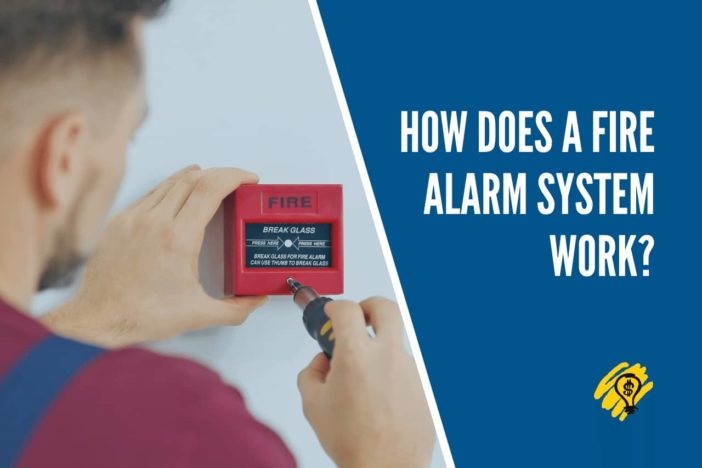Fire alarm systems are a necessary safety measure in all types of commercial and residential buildings. It is important to know how these systems operate so that they can be properly installed, maintained, and monitored.
We all know the drill; a loud siren, and everyone rushes to the nearest exit, signifying a probable fire on the premises. But have you ever wondered how these fire systems work?
Continue reading to find out how.
Components of a Fire Alarm System
To understand how a fire system works, you must first understand that it comprises numerous interconnected pieces. These components include;
- The fire alarm panel
- Initiating devices, e.g., Pull stations, smoke detectors, air aspirating smoke detectors, and sprinkler water flow sensors.
- Indicating/notification appliances, e.g., horns, bells, chimes, and strobe lights.
- Power supply, e.g., Fire alarm batteries
- Auxiliary devices, e.g., visual LED indicators
Types of Fire Alarm Systems
For most buildings, you will find that there are two types of fire alarm systems;
The Conventional Fire Alarm System
These fire alarm systems relay analog information through electric currents. They rely on smoke detectors to detect a fire. On detecting a fire, an initiating device sends an electric signal to the control panel. The control panels then trigger the indicating appliances.
Some control panels will trigger fire fighting mechanisms like fire sprinklers. Some may even relay a message to the fire department. However, they are not location specific and only give a general idea of where the fire may be.
The Addressable Fire Alarm System
These systems work by relaying digital information. Many of these systems are wireless. You can tell the location of the fire by looking at the initiating device that the fire or smoke triggers.
These systems are so precise that they can tell the smoke’s density and heat’s intensity. This is useful information when planning an escape route.
States of a Fire Alarm System
At any given time, a fire alarm panel monitors the state of the whole system. This state can be in either of the three states mentioned below:
- Normal State: In this state, the alarm isn’t activated. The system is operating normally, including the circuit and wiring.
- Alarm State: In this state, the alarm goes off, notifying all people in the vicinity of the impending fire danger.
- Trouble State: This state shows some trouble with the fire alarm system. It might result from a short circuit in the wiring of the system.
How Does a Fire Alarm Get Activated?
Generally, the initiating devices detect fire or smoke. These devices are usually connected to the fire alarm panel. This panel continuously monitors the state of these initiating devices.
So when there is a fire, the initiating devices transmit a signal to the fire alarm panel. The panel then changes its state to alarm and activates all connected notification appliances. This may include activating sirens and sending a message to the fire department.
How Do You Disarm a Fire Alarm?
After addressing the fire alarm or lack thereof, you need to disarm the fire alarm in case of a false alarm. You can do this by resetting it on the control panel. This is usually possible with a press of a button.
Bottom Line
Fire alarm systems are very important features of Home security as they can distinguish between safety and danger in your house. Knowing how your system works will help you know how to look out for potential fire dangers and be better prepared for them.



